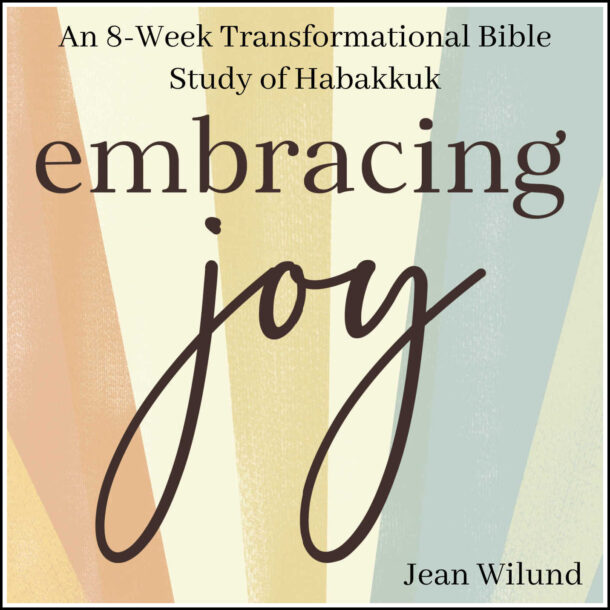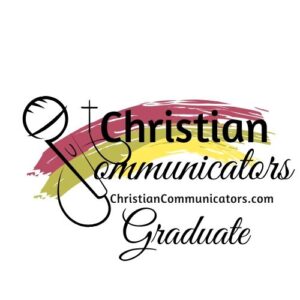
Want to better understand each book of the Bible? Bible book introductions and concordances help.
After I explain what they are and why they’re helpful, I’ll give you links to the ones I recommended. There are surely other great ones, but the ones below will give you what you need.
BIBLE BOOK INTRODUCTIONS
Bible book introductions offer insights into the book such as the author, the needs the book addresses, and other important background information to best prepare us to read and study the book.
Most study Bibles provide an introduction to each book of the Bible. You’ll find them at the beginning of each book.
If your Bible doesn’t contain them, or you’d like to read other introductions, I recommend checking out the free online resources and the printed resources I describe below.
CONCORDANCES
Concordances help us understand the meaning of the original words, as I explain in my book Ease into the Bible:
A concordance is a valuable tool for understanding how the Bible’s authors used an original word or discussed a topic. Concordances list every English word in the Bible (except helper words) along with the original Hebrew or Greek word and its corresponding “Strong’s number.” (In 1890, James Strong created a number system to link the original Hebrew or Greek root word to each word in the Bible. Each number begins with either an H or a G, depending on if the word is Hebrew or Greek.) The printed version of the Strong’s Exhaustive Concordance has 1,968 pages and weighs over five pounds. Fortunately, it’s available free online.
Concordances also list the number of times each word appears in the Bible and each verse in which it appears. When using a concordance, choose an edition that’s the same translation as your Bible.
(Excerpt taken from page 125 of Ease into the Bible.)
The Bible we’re reading is a translation of the original. The translators do their best to pick the best words in our language to convey the author’s original intent, but often the word they chose isn’t able to convey the full original word’s true meaning.
Consider the word “love.” In English, this one word is tasked to convey the love between parents and their children, between a husband and wife, and between friends as well as our love for coffee or the beach. These loves are different kinds of love, but we still say, “I love…” Greek and Hebrew often use different words to convey nuances that the English (or any other language) may miss. Praise God for concordances.
FREE ONLINE BOOK INTRODUCTIONS
1. BlueLetterBible.org Book Introductions and Outlines
The BlueLetterBible website carries a full list of Bible Book Introductions & Outlines.
2. Bibles.Net Book Introductions and Backgrounds
Bibles.net also provides a couple of different ways to read their Bible book introductions for each book of the Bible.
The following list shows a grid of each book of the Bible. You can click on any of the books to read a story form explanation of what each book of the Bible is about.
The other way to read their introductions takes you to the whole Bible.
Click on the “Read” tab at the top of the home page. It will take you to an ESV and NLT translation of the Bible. (Choose between the two translations in the drop down menu at the top of the page.)
You can jump to any book of the Bible using a drop down menu.
Once you’ve chosen a book, click on the “Book Intro” tab.
For each book, you’ll find a “Book Introduction.” These are the story form introductions that help explain what the book is about.
You’ll also find a “Book Background” for each book of the Bible.
Below is a link to the book of Mark. From there, you can jump to any other book.
PRINTED BOOK INTRODUCTIONS AND HANDBOOKS/GUIDES
The following handbooks and guides all include introductions to each book of the Bible. They also include other resources to help you understand the Bible.
1. The MacArthur Bible Handbook
My husband and I use this handbook regularly.

Description quoted from Amazon:
“The MacArthur Bible Handbook is the ultimate book-by-book survey of the Bible, including charts, graphs, and illustrations from today’s leading expository teacher.
A unique reference tool that is committed to quality and biblical teaching—will help you easily understand each book of the Bible, its historical context, and its place in Scripture.
Bible Book Basics at a Glance!
- The meaning of each Bible book’s name
- Who wrote it
- The date and setting
- The theme and purpose
- Its key words, verses, and chapters
- How Christ is presented (even in the Old Testament)
- Its contribution to the Bible as a whole
- A broad summary of the events and highlights it records
- A detailed outline of the book
MacArthur has put in over 60,000 hours of sermon preparation time in his 35 year ministry!”
Get it on Amazon here.
2. MacArthur’s Quick Reference Guide to the Bible: A Book-By-Book Overview of Essential Bible Information
My husband and I also use this reference guide regularly.

Description Quoted from Amazon:
“Study the Bible Deeply, Faithfully, and Effectively
“There is a big difference between simply reading the Bible and studying the Bible well, so it transforms your life. That difference often boils down to having the right resources not just to read but to understand and apply what you are reading to your life.
“In MacArthur’s Quick Reference Guide to the Bible, noted pastor and teacher John MacArthur takes you through the key aspects of the Bible. This valuable companion to reading the Bible has been prepared to help you develop good Bible-reading habits and a better understanding of the depth and breadth of God’s Word.
“For all 66 books in the Bible it highlights:
- Author and date
- Key people
- Background and setting
- Key doctrines
- Key aspects of how God’s character is illustrated
- How Christ can be found in that book
- Key words in the book
- Quick overview with a brief outline of contents
- Historical notes about what else what happening in the world when the book was written
- Frequently asked questions about the book
- Questions for reflection
“Other valuable features include :
- “How We Got the Bible” section
- “How to Study the Bible” section
- “Chronology of the Bible” section
- Appendix with Quick Notes on Theology
- Chronology of Old Testament Patriarchs and Judges
- Chronology of Old Testament Kings and Prophets
- Timeline of the Ministry of Jesus Christ
- Index of Key Words
“Filled with the fruit of decades of study and teaching MacArthur’s Quick Reference Guide to the Bible is an essential tool for anyone who wants to seriously study the Bible deeply, faithfully, and effectively.”
Get it on Amazon here.
3. Willmington’s Bible Handbook
I also have this handbook, which I’ve enjoyed very much.

Description Quoted from Amazon:
“Willmington’s Bible Handbook gives a verse-by-verse commentary of each book of the Bible and is written with both new believers and seasoned students of the Bible in mind. This special Bible handbook also includes many special features that provide fresh, new insights into the most inspirational book ever written.
“Special Features
- Focus on the unity of the Bible shows how each part of the Bible relates to the whole.
- “How We Got the Bible” explains how 40 authors over 2,000 years spoke the same saving message.
- Emphasis on the historical accuracy of the Bible explores how thousands of archeological discoveries verify Scripture.
- “People to Remember” brings the stories of Bible people to life.
- Lists and background material give an overview of Scripture through comprehensive, comparitive lists and charts
- Indexes to topics, Scripture references, Bible people, maps, charts,
- Harmony of the Gospels
- Chronology of Bible events
- . . . And more!”
Get it on Amazon here.
4. Holman Illustrated Bible Handbook
I don’t own this handbook, so I make no promises about it’s greatness, but I’ve been so pleased with their CSB Bible translation that I imagine I’d be pleased with their Bible handbook.

Description quoted from Amazon:
“Many people would love to search for truth in the Bible but are intimidated by its size, or the length of time its story spans, or the distance between our day and the cultural settings of the biblical authors, or certain questions about the historical reliability and contemporary relevance of Scripture.
“The Holman Illustrated Bible Handbook is designed to overcome the obstacles people have to understanding the Bible. It begins with an essay on ‘How to Read and Study the Bible’ and then provides a brief and basic overview of each of the Bible’s 66 books: each book’s author, main message, evidences of authenticity, and historical context.
“In addition to the full-color maps, photographs, reconstructions, and charts that equip readers throughout the volume, a smartphone-accessible QR code is included for each chapter that leads to related online teaching from noted Bible scholar Gene Getz.”
Get it on Amazon here.
BIBLE CONCORDANCES
Since Strong’s is the most used concordance, it’s the one I’m recommending to you. I use it often through two websites, BlueLetterBible.org and Biblehub.com my favorite online resources.
1. BlueLetterBible.org Strong’s Concordance

To explain how I got here, follow these steps:
Open BlueLetterBible.org and enter the passage you want to study, such as Mark 1:1. (Click here to go to Mark 1:1.)

One you’re there, you’ll see the button for “TOOLS.” Click on it next to Mark 1:1. It will take you here. (The same place as the previous image above.)
Once you’re in the TOOLS section, you’ll see the column for “Strongs.” Click on the Strong’s number for the word you want to find the original meaning. For example, let’s click on the Strong’s number for “Jesus,” which is G2424.

As you’ll see when you go to the actual page, BlueLetterBible gives us the original Greek word, its pronunciation, definition, and many other helpful information. Scroll through the whole page and don’t be afraid to click around and discover more about the original word.
2. Biblehub.com Greek and Hebrew Concordances
If we use Biblehub.org to look up the word “Jesus” in Mark 1:1, we’ll first arrive at this page.

Click on the small “Greek” tab under the Mark 1:1 heading to go to the page for the concordance.

Click on the Strong’s 2424

From this page, you’ll see five options listed just under the blue banner that will take you to: the Summary of the word in the Strong’s Lexicon, the NASEC (NAS Exhaustive Concordance), Thayer’s concordance, Strong’s Concordance, and Englishman’s Concordance.
So many options!






